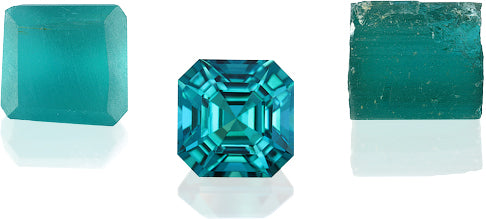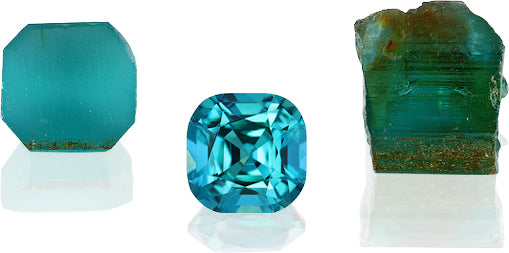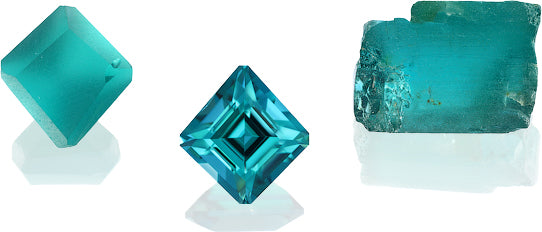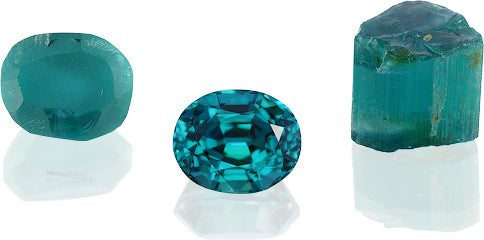Royal Indigo: The Magic of the Ocean
Color is always the crucial criterion when it comes to appreciating colored gemstones and when it comes to naming your favorite color, well, it is hard to deny the magnetic effect of clear ocean water on the eye.
So this beautiful and rare gem is hard to resist, possessing, as it does, the hypnotic power of the green-blue waves of the sea.
 Royal indigo tourmaline 3.36 ct
Royal indigo tourmaline 3.36 ctAlternatively called Indicolite, Indigo Tourmaline is one of the rarest and most desirable varieties of tourmaline. Given that there is a certain haziness around trade names in gemology, we may assume that the name was initially given only to deep-blue pieces with no shades of green or black. However, such material is extremely scarce and, perhaps because of this, the name Indigo is now also used for tourmaline that reflects the fusion of green and blue that is seawater.
 Royal indigo tourmaline 4.93 ct
Royal indigo tourmaline 4.93 ctBrazil has always been the principal source of tourmaline of all colors. It is also found in Afghanistan and Pakistan, but the progress made in mining in Africa makes it highly competitive. The rough from Nigeria, Mozambique, Namibia and other African countries, like that from the other sources, has common features. Generally the material is over-saturated blue to black along the c-axis, too dark and unfavorable for cutting. This explains why most indicolite on the market is cut in a particular, rather limiting way and, also, heated in order to lighten the stone and open up its naturally dark color. There is one special Namibian mine, though, that produces material of a beautiful open blue color along all three axes.

Royal indigo tourmaline 3.36 ct
With a pocket from that mine found at the beginning of the year, Yavorskyy has taken another very special niche in the market. A whole array of signature-cut indigo tourmalines is there to satisfy the demand of any gem hunter: a versed connoisseur can try their luck on a large loupe-clean once-in-a-lifetime indigo, while a passer-by simply enchanted by the color can have a fine matched pair of unique yet affordable material. It is important to emphasize that one is far more likely to find a non-heated indigo than, say, a non-heated paraiba, still the most expensive of all tourmalines. And this is what makes the indigo variety so desirable to those who appreciate natural, untreated beauty in gemstones.
 Royal indigo tourmaline 3.22 ct
Royal indigo tourmaline 3.22 ctBeing a variety of tourmaline, indicolite commonly contains minor inclusions, which makes any perfectly clean stones even more valuable. The luster of tourmaline in general is not the strongest, but indicolite definitely has a sparkle, making the gem engagingly pretty in any light. An added inducement to the gem lover may be that indigo tourmaline is also said to possess healing properties and energetic powers.
 Royal indigo tourmaline 7.48 ct
Royal indigo tourmaline 7.48 ctFinally, we come again to the color. The sensation of gazing into cool ocean waves when looking at an indigo gem is mesmerizing. There is no other stone of this color, and no other stone can be substituted for an indigo. Observing the stone in jewelry, it is curious to see how an indigo dipped in the sea takes on a somewhat diluted cyan hue, as if mimicking the water. Take it back to the sun though, and its vivid greenish-blue sparkle returns. But the indigo’s true color shines out and glows at its best in incandescent light; especially candle light. This is when the mystery of color becomes irresistible. This is what we call Royal Indigo.


Follow Us